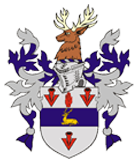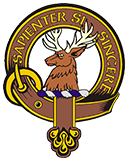Battles of Invernhaven And Perth – 1300s
As the story continues, following much strife and, undoubtedly, cost in lives, blood, and money, the MacIntosh chief sought relief from the Crown. It was determined and ordered that the clans should select 30 champions each and meet on the field at Perth for trial by combat. The majority of the remaining details have already been revisited, so we won’t do so again. However, a few details, including the ending of the battle, will be crucial to understand and will serve as points of reference and strength in opposition to prevailing Davidson mythology.
Some may have heard a variant of the following, but allow it to be retold as Allison illustrates, and it is a whole new game. Prior to the combat, Chattan found themselves short a man. Allison and others hold that the missing man fell very ill before leaving his home, and had worsened by the battle. He was, therefore, removed from the Chattan host. This, of course, left 29 to 30 in favor of the Camerons. The King asked if The Cameron would elect a man as a non-combatant, but he refused. MacIntosh refused to fight at anything less than full strength, but rather than refusing the fight to await another date and risk being seen as fearful or akin to it, he called out to the crowd who had gathered to watch and asked if there was anyone among them who would “fill in,” as it were. To what we can be sure was nothing short of the onlookers’ surprise, a man leapt the wall (which had been erected with its back to the River Tay to prevent the crowd from entering the field – and perhaps to prevent anyone leaving it) and stated that he would take the part of Clan Chattan in return for permanent protection and for being “established (cared for materially, etc.) for his remaining days.” The MacIntosh agreed. As it turns out, the man, a smith, proved invaluable on the field and seems to have been the one to draw first blood against the Camerons.
At the end of the battle – here’s the twist folks – 11 of the Clan Chattan, including the smith, also known as William Gow (Smith) or as “Hal o’ the Wynds” (apparently due to his love of tall tales and hearing himself speak) and at least one Davidson, still stood, and the remaining Cameron, bloodied and beaten, jumped into the Tay and swam for his life. Chattan had won the fight and the backing of the Crown – for a while. Allison points out, however, that the discord between these groups was an old and deep-seated tension, and that hostilities between the two clans only paused for a number of years after the North Inch. Conflict renewed less than a century later, resulting in multiple, bloody battles and several lesser clashes until a sort of armistice was achieved in 1688! 13
Back to the “Who” and the “Why”
This take on the North Inch history, while not unique in every way, certainly portrays the outcome in a different light. Coupled with the explanations of history before the battle and after, it is hard to deny that this tale has to be a new contender for the top job. To further bolster the position, let us turn back to the heart of the issue. It is critical that we identify, to the best of our ability, the participants of the Battle of the North Inch, and why they were there. These variables must be addressed in tandem if we are to have a clearer picture of things, because one may directly provide or infer the answer to the other. Let me explain. We’ve seen that the conflict at Invernahavon was not the last encounter between Chattan and Cameron, and it is not hard to imagine the disruptions the continued fighting would have caused in local politics, not to mention the effect on trade and on the regional populations. In the end, adjudication would have been seen as the only means to put things “back on track.” As these clans were important and influential, the Crown would need to get involved. So, this particular why isn’t hard to accept if we view the story from the current who: the Chattan vs. Cameron angle offered by Allison. If we are to evaluate the validity of answers to the same question from previous versions of Davidson history, there are some difficult waters to navigate. But, let’s bring them into even sharper relief and look at answers to the why from the former who perspectives, this time set against the backdrop of our new narrative and with a bit of logical reasoning.
Please note that Matt’s footnotes are listed at the end of the article.

